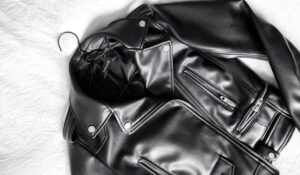Is Vegan Leather Durable? Unveiling the Truth Behind its Longevity and Sustainability
In recent years, the fashion industry has experienced a remarkable transformation, with sustainability taking center stage. As consumers increasingly prioritize ethical choices, the rise of vegan leather has ushered in a new era of eco-conscious fashion.
Notably, influential fashion brands such as Gucci and Gianni have embraced this innovative material, revolutionizing the way we perceive and consume leather products. One question that arises is, “Is vegan leather durable?”
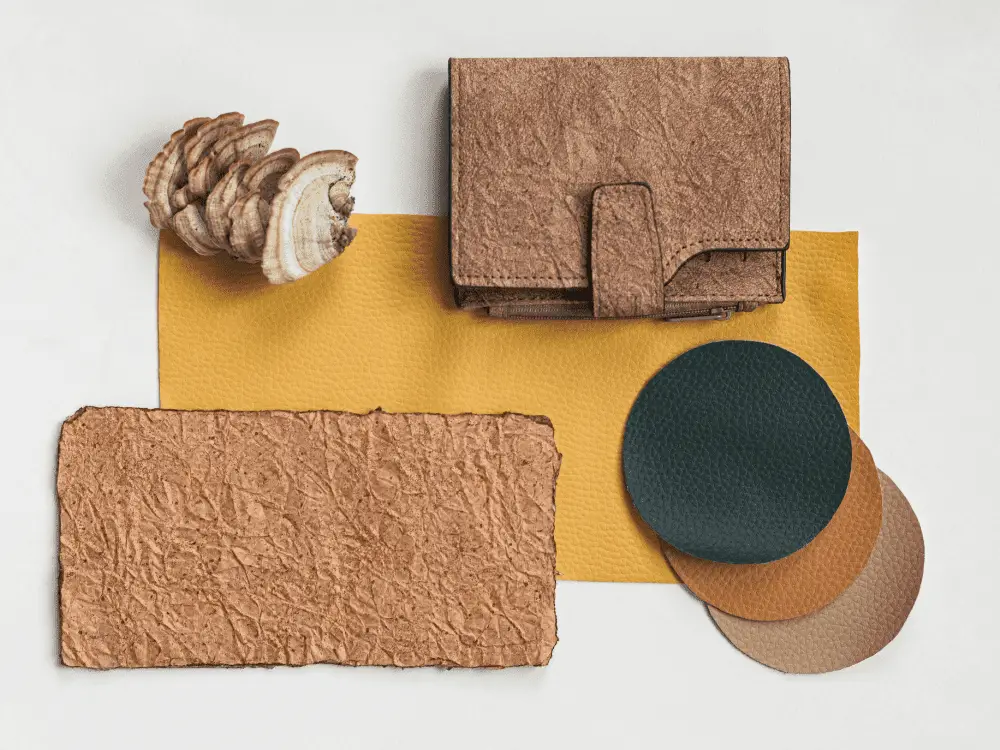
Is vegan leather durable?
Yes, vegan leather is generally considered to be durable. While the durability of vegan leather can vary depending on the specific material and manufacturing process, modern advancements have significantly improved its quality and longevity.
Vegan leather made from high-quality synthetic materials, is designed to withstand regular use and maintain its appearance over time.
Additionally, vegan leather can be treated with protective coatings to enhance its durability and resistance to wear and tear. Overall, vegan leather offers a durable alternative to traditional leather without compromising on style or ethics.
Gucci: Pioneering the Transition to Vegan Leather
Gucci, renowned for its luxury designs, has played a pivotal role in driving the adoption of vegan leather. Recognizing the demand for cruelty-free options, the brand has embarked on a journey to redefine its leather offerings.
By incorporating vegan leather into their collections, Gucci has demonstrated a commitment to sustainability and animal welfare, catering to a growing audience of conscious consumers.
Ganni: Merging Style and Sustainability with Vegan Leather
Ganni, a trailblazing Danish fashion brand, has also embraced vegan leather as a means to merge style and sustainability. Known for their contemporary designs and forward-thinking approach, Ganni has captivated the fashion world by integrating vegan leather into their coveted pieces.
By doing so, they have showcased the versatility and appeal of this animal-friendly alternative, inspiring other brands to follow suit.
The Rise of Vegan Leather
The surge in the popularity of vegan leather signifies a paradigm shift in consumer preferences. With its animal-friendly nature and reduced environmental impact, vegan leather has emerged as a desirable choice for conscious consumers.
By opting for vegan leather products, individuals can make a fashion statement while aligning their values with sustainability and ethical practices.
Is Vegan Leather a Sustainable Choice?
Research indicates that vegan leather has a significantly lower environmental impact compared to genuine leather. According to a 2018 sustainability report by luxury goods giant Kering, the ecological footprint of vegan leather can be up to one-third smaller than that of real leather.
However, the specific impact depends on the materials used in the production of vegan leather.
Cattle production, a major contributor to global animal agriculture emissions, is responsible for approximately 65 percent of greenhouse gas emissions. In regions like Brazil, cattle ranching drives deforestation in the Amazon rainforest, exacerbating environmental concerns.
The tanning process involved in producing traditional leather involves the use of toxic chemicals such as chromium, formaldehyde, and arsenic. These substances can contaminate water streams, leading to harmful effects on marine life and disrupting ecosystems.
Workers involved in leather tanning face various health risks, including skin conditions and cancer.
This impact is often considered a form of environmental racism, as a significant majority of US-operated tanneries are located overseas.
Differentiating Vegan Leather and Faux Leather
When exploring leather alternatives, terms like “vegan leather” and “faux leather” are often used interchangeably. However, understanding the distinction between these terms is crucial for making informed choices as a consumer.
What is vegan leather vs faux leather?
Vegan leather refers to a material that replicates the appearance and texture of real leather without using any animal-derived components. It is specifically designed to align with ethical principles, catering to the growing demand for cruelty-free fashion.
Vegan leather is sourced from a variety of plant-based and synthetic materials, offering sustainable alternatives to traditional leather while minimizing environmental impact.
Faux leather is a broader term encompassing various materials that imitate the look and feel of genuine leather. While some faux leathers are also vegan, the term is not exclusive to animal-free options.
Faux leather can include materials like polyurethane (PU), polyvinyl chloride (PVC), microfiber, or other synthetic materials that aim to mimic the qualities of leather.
The primary distinction between vegan leather and faux leather lies in their composition and sustainability. Vegan leather strictly adheres to ethical guidelines by avoiding any animal-derived components, providing a more sustainable alternative to traditional leather.
On the other hand, faux leather may include both vegan and non-vegan options, as some variations may still use animal byproducts in their production.
In terms of environmental impact, vegan leather generally has a more positive profile compared to faux leather. While both options reduce the demand for animal hides, vegan leather is often made from plant-based materials or recycled resources, minimizing reliance on fossil fuel-derived plastics.
Additionally, vegan leather materials like pineapple leaf leather, grape skin leather, and mycelium leather offer biodegradable and renewable options, further enhancing their sustainability credentials.
Types of Vegan leather
Let’s delve into the various types of vegan leather and their unique compositions. Polyurethane (PU) and Polyvinyl Chloride (PVC) Leather: Classic Vegan Choices.
The most common forms of vegan leather are PU and PVC. While both are animal-free and require fewer resources than cowhide leather, they differ in terms of breathability and durability. PU leather offers better breathability, while PVC leather is known for its durability.
It’s important to note that these synthetic leathers are made from fossil fuel-based plastics, making them less sustainable due to their non-biodegradable nature. However, their environmental impact is still significantly lower than that of traditional leather, and they are free from animal products.
Tesla’s Vegan Leather: Eco-Conscious Luxury Upholstery

Tesla, a leading electric vehicle manufacturer, showcases its commitment to sustainability through the use of vegan leather upholstery. This cruelty-free material replicates the luxurious look and feel of traditional leather without utilizing any animal-derived components.
Composed of high-quality synthetic materials, Tesla’s vegan leather upholds sustainability while offering durability, comfort, and aesthetic appeal.
By providing a sustainable alternative to traditional leather, Tesla sets a new standard for eco-conscious luxury vehicles, inspiring the adoption of ethical materials in the automotive industry.
Mycelium Leather: Harnessing the Power of Mushrooms
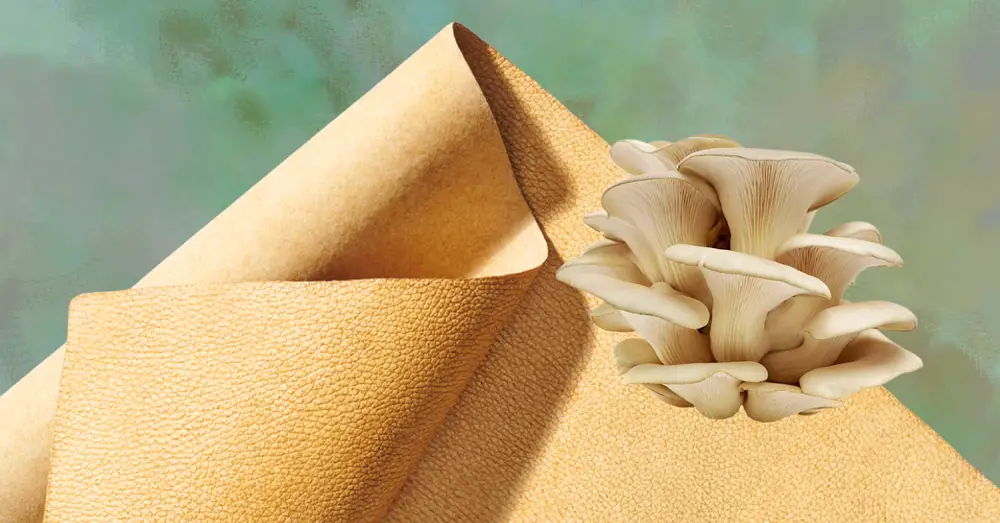
Mycelium leather, also known as “mushroom leather,” is a groundbreaking alternative made from the root structure of mushrooms and fungi. This material mimics the texture and durability of real leather. It finds application in clothing, bags, shoes, and accessories.
Unlike plastic-based leather, mycelium leather is biodegradable. Renowned fashion brands like Stella McCartney, Adidas, Ganni, Calvin Klein, and Lululemon have embraced mycelium leather, emphasizing its versatility and eco-friendly nature.
Key players in mycelium leather production include Ecovative, MycoWorks, and Bolt Threads.
Grape Skin Leather: Transforming Wine Byproducts
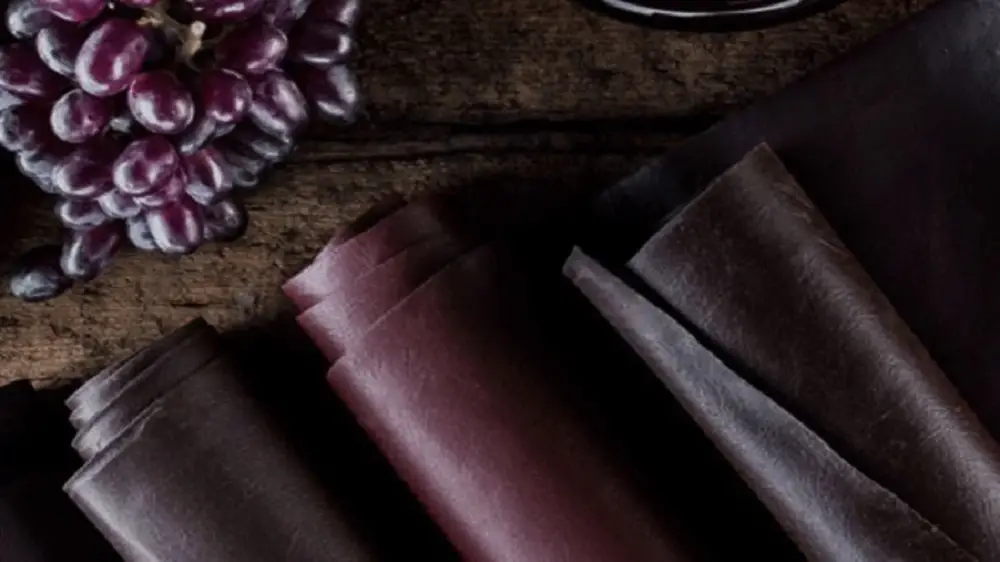
An Italian textile company called Vegea has revolutionized vegan leather production by utilizing grape skins discarded by the wine industry.
This innovative approach creates a material suitable for crafting bags, shoes, belts, wallets, car interiors, and furniture. Vegea’s grape skin leather promotes sustainability by repurposing waste and reducing environmental impact.
Cactus Leather: Thriving in Arid Regions
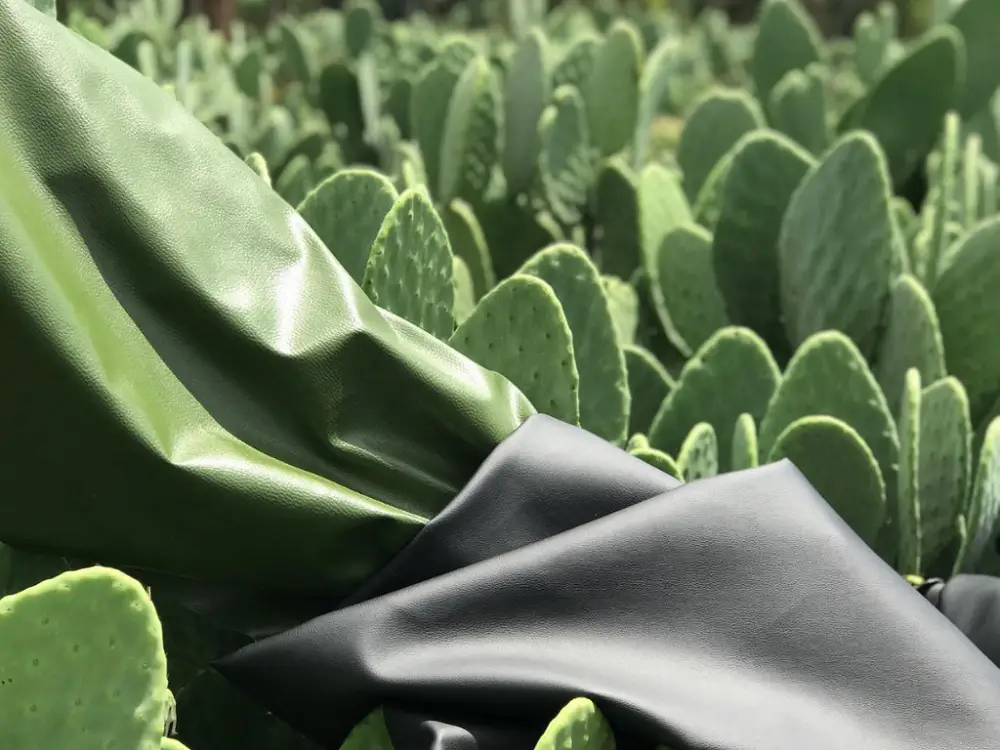
Cactus leather, developed by companies like Deserto, is derived from the leaves of the nopal cactus. This resilient and drought-resistant plant naturally thrives in arid regions.
By harvesting the cactus leaves, the production of leather-like material can take place, offering flexibility, breathability, and durability comparable to cowhide leather. Cactus leather promotes biodiversity by allowing the cactus plant to remain intact and continue growing.
Collaborations between Deserto and fashion brands like H&M, Fossil, Givenchy, Adidas, Karl Lagerfeld, Mercedes-Benz, and BMW highlight the growing demand for this sustainable leather option.
Pineapple Leaf Leather: Tapping into Tropical Fruit Residues

Pineapple leaf leather, often referred to as Piñatex, utilizes the cellulose fibers from pineapple foliage. This innovative material offers flexibility, breathability, and durability, making it suitable for various products.
Nike, Hugo Boss, H&M, and No Saint are among the brands that have embraced pineapple-leaf leather as a more sustainable alternative to traditional leather.
Corn Leather: Blending Corn with Polyurethane
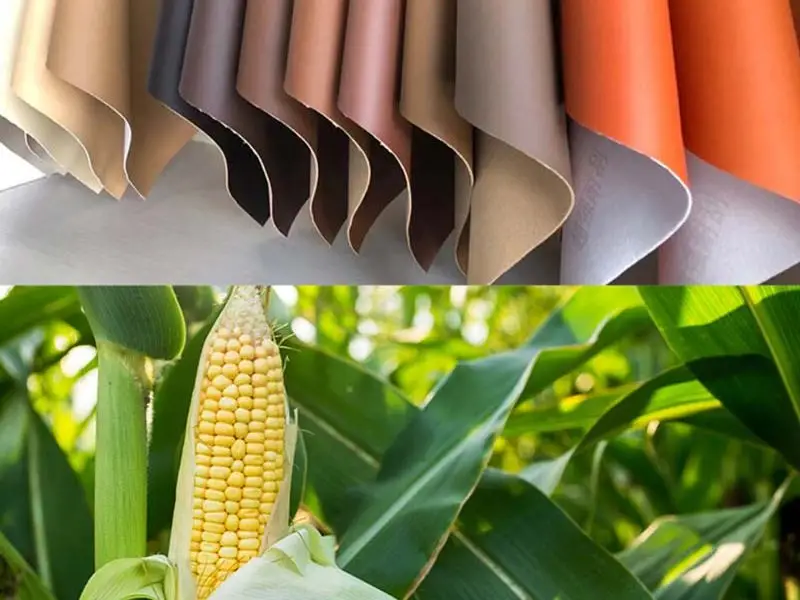
Corn leather combines corn derivatives with polyurethane to create an animal-free alternative to traditional leather. While not fully biodegradable, corn leather offers a more eco-friendly option compared to cowhide leather.
Luxury fashion brands like Louis Vuitton and independent vegan brands have recognized the quality and durability of corn leather.
Apple Leather: Utilizing Fruit Byproducts
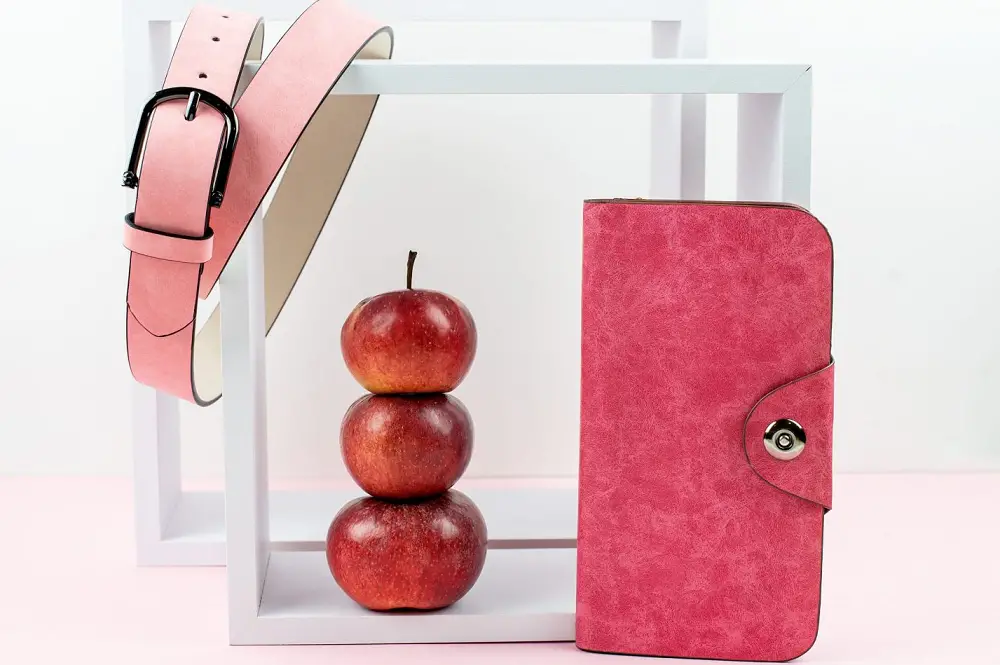
Apple leather, often referred to as AppleSkin, repurposes the leftover pulp and peel waste from the juice industry. This vegan leather material, composed of 50% apple waste and 50% polyurethane, finds applications in purses, shoes, and fashion accessories.
By utilizing apple residues that would otherwise go unused, this sustainable material reduces waste and environmental impact.
Yeast Leather: The Rise of Fermentation
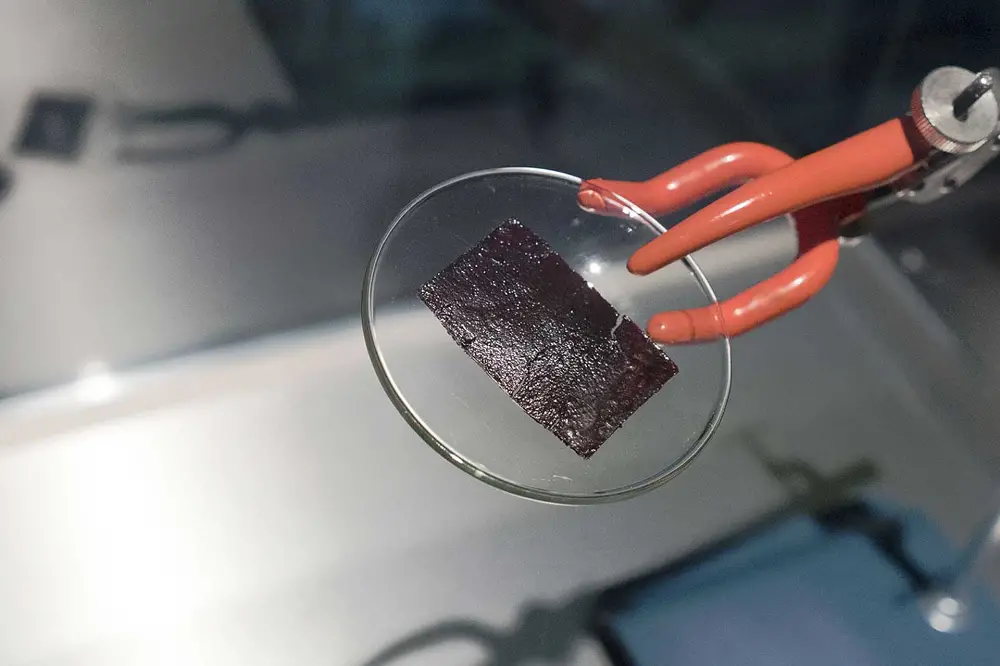
Yeast, a versatile microorganism found in various industries, has also made its way into textile production. Modern Meadow, a biotechnology company, utilizes yeast fermentation to produce animal-free collagen that mimics the structure of cowhide leather. Although still in its early stages, yeast leather shows promise in sustainably replacing animal-derived materials.
In conclusion, the realm of vegan leather offers a diverse range of sustainable alternatives to traditional leather. From upcycled materials like coffee grounds and recycled plastic to natural sources such as wood, agricultural waste, cork, grains, and leaves, the possibilities for eco-friendly leather are ever-expanding.
Just as the plant-based meat industry provides various options, the world of vegan leather presents numerous ways to create animal-free, fashionable, and environmentally-conscious alternatives.
Answering the question “How durable is vegan leather?”: the main thing is to follow the rules of care and the skin will last a long time.

